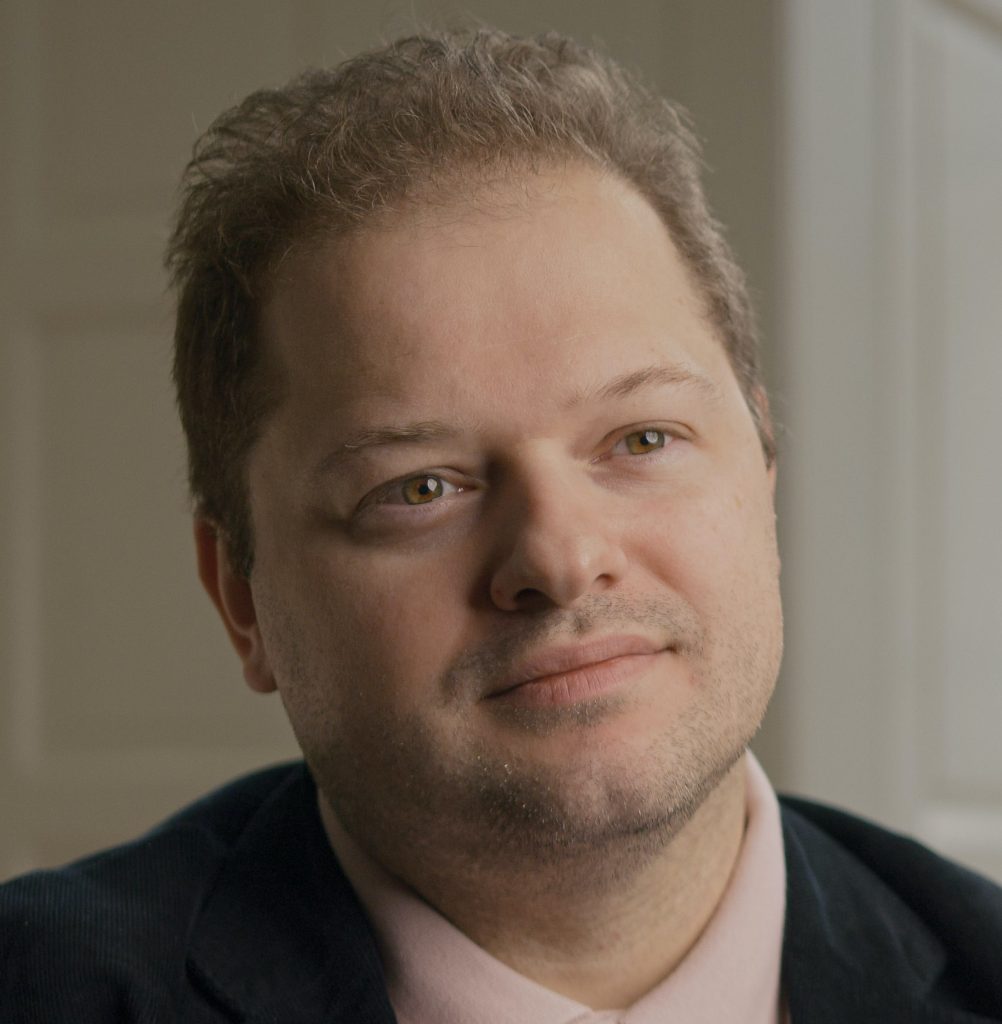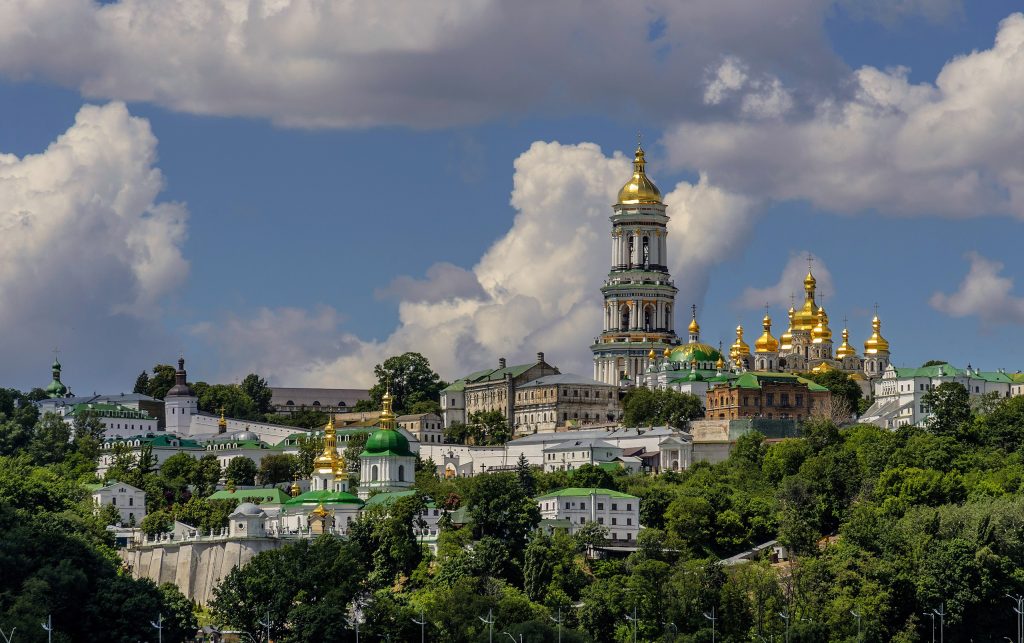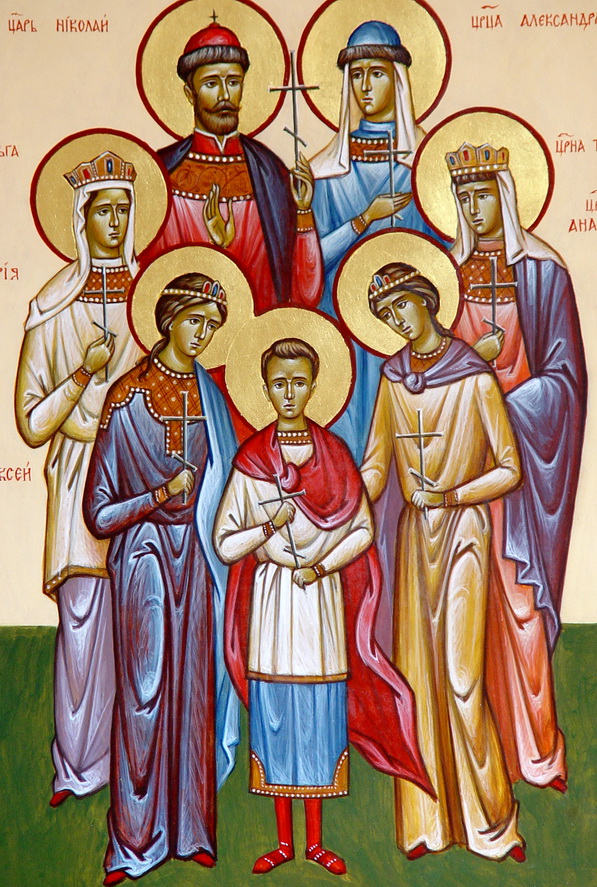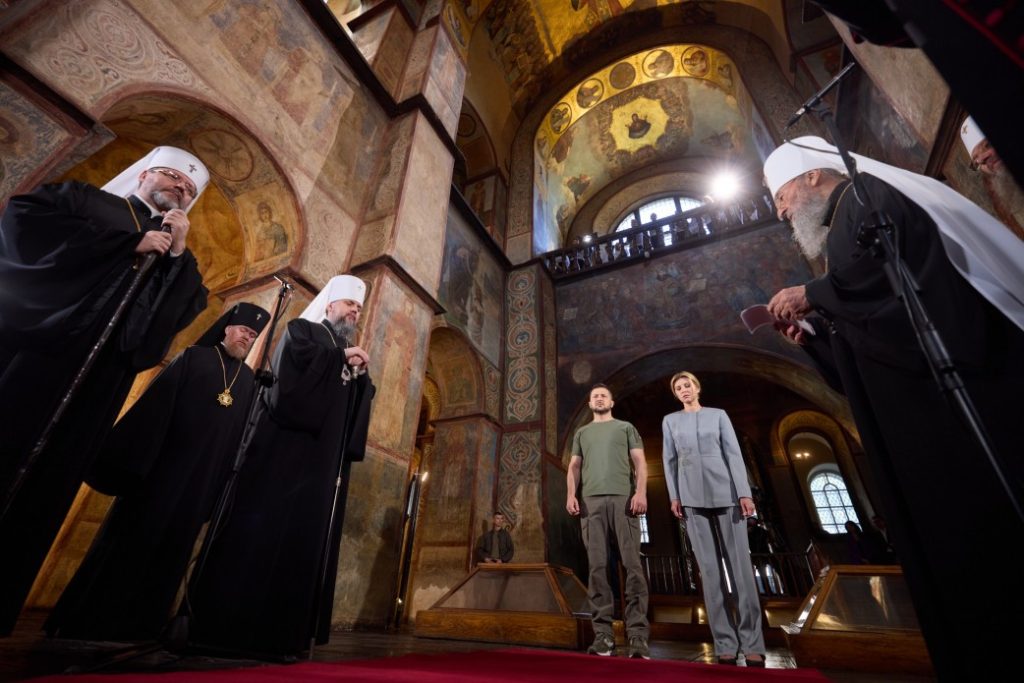
Andriy Fert is a UNET non-resident fellow at Zentrum für Osteuropa- und internationale Studien in Berlin.
Dmytro Vovk is a visiting associate professor at Benjamin N. Cardozo School of Law.

In June 2023, the fashionable Ukrainian multimedia cultural project Ukraїner published an article on decolonization. Decolonization, as the author describes it, is “a process of cleansing the public space from the markers of (Russian) occupation,” including monuments, mosaics, names of streets, and public premises associated with the Russian Empire, the Soviet Union and contemporary Russia.
One of those markers mentioned in the articles is the Church—the Ukrainian Orthodox Church (UOC), historically and ecclesiastically affiliated with the Moscow Patriarchate, and its parishes located throughout the country. For a parish to leave the UOC, according to Ukraїner, is to take “a significant step toward cleaning the cultural space of Ukraine from Russian influence, because [the UOC] not only breeds imperial narratives but also fills the Ukrainian space with alien cultural codes.”
The Ukraїner article is another example of the fact that Orthodox Christianity in Ukraine is less about specific creeds and theology and more about belonging, tradition, history, and symbols. Ukraine is dotted with tens of thousands of Orthodox churches, crosses, and icons that, over the centuries, have grown into the landscape so perfectly that it is now impossible to imagine a city or village without distinctly ornate Orthodox aesthetics. A test that Ukrainian students must take after completing school required them, until recently, to identify and name several dozen Ukrainian Orthodox shrines, such as St. Sophia Cathedral in Kyiv or the Borys and Hlib Church in Chernihiv. National commemorations of the most important historic events invariably draw on Orthodox aesthetics and rituals; the active participation of top clerics in such ceremonies is accepted and presumed.
Ukrainian history, as presented in school history textbooks or in the space that historians sometimes dismissively call “public history,” is so inseparably linked to the history of the Orthodox Church that even the Soviet anti-religious educational system never managed to separate one from the other. The Christianization of medieval Ukraine, for instance, was and still is represented as a distinctly important step for national development, even a move toward a “European family of nations.” What is more, since 2021, the religious memorial day on which Orthodox believers commemorate the “baptism of Rus” has been celebrated by the Ukrainian state as a day of “Ukrainian statehood.” All of these links provide for an intertwinement of Ukrainian national identity and Orthodox Christianity.
Still, this intertwining does not translate into high church attendance figures or political support. While a significant share of the Ukrainian population shows up at the closest church on Easter to have their pasky (traditional sweet bread) blessed, a much smaller share attends church regularly. On one hand, the majority (51%) of Ukrainians claimed in a 2017 Pew Research Survey that being Orthodox Christian was “very or somewhat important to feel truly national” in their country. On the other, the Orthodox Church did not play any significant role in developing a Ukrainian national identity in the nineteenth century, as historian John-Paul Himka has noted, nor does it play that role today, as recent studies show.
In a way, it can be said that the Orthodox Church tends to show up in public discourse as a national cultural heritage. Heritagization of religion is by no means a Ukrainian development. Danièle Hervieu-Léger identified a very similar development with the Catholic Church in France, while Jeanna Kormina edited a volume on similar developments in Russia. Unlike in France or Russia, however, in Ukraine the dual religious/national heritage is represented as being constantly in danger. And that danger comes from Russia and the Russian Church.

From this perspective, it is interesting to examine media representation of the controversy surrounding the refusal of UOC monks to vacate the state-owned Kyiv-Pechersk Lavra (Kyiv Monastery of the Caves) after the Ukrainian government announced it would terminate the UOC’s lease on the property in January 2023. Take, for instance, a video posted by the popular history YouTube channel WAS in October 2023. In that video, Lavra employees claim that the continued UOC presence had been “a spiritual occupation” of the Ukrainian shrine: Pro-Russian forces had taken over this heritage of the Ukrainian nation and turned it into “a mouthpiece of the Russian world.” The nation sought to restore a “genuine meaning” to Lavra by evicting monks. The collaborationism of the UOC clerics, and illegal edifices built by UOC monks on the UNESCO-protected site, appeared less important than the fact that the “Russian Church” had taken hold of the “Ukrainian shrine.”
References to “spiritual occupation” in the debates around the Lavra were not altogether new. This same narrative occurred several years ago after the Ecumenical Patriarch granted ecclesiastical independence (autocephaly) to the UOC’s main rival—the Orthodox Church of Ukraine. Back then, the Ukrainian Ministry for Education shared recommendationsfor schools on how to teach about the “meaning of the Tomos” (the autocephaly document issued by the Ecumenical Patriarchate) in history lessons. The ministry bureaucrats encouraged teachers to tell students that the “annexation” of the Ukrainian Church by the Russian Church in the seventeenth century had turned Ukraine into a “Russian political and ecclesiastical colony.” In that colony, “the tragic processes of Russification” occurred. As a result, “Ukrainian Orthodoxy lost its uniqueness,” while any manifestations that did not conform to the Russian Church tradition were prohibited. Therefore, the Tomos was not so much about religion but about historical justice—reclaiming the Ukrainian Church from a Russian ecclesiastical prison.
The Russian full-fledged invasion has amplified this sort of narrative. Given how intertwined Ukrainian history and Orthodox Christianity are, and how natural the presence of Orthodox aesthetics in the contemporary Ukrainian landscape is, it is hardly surprising that any discussions about coping with Russian colonial legacies involve Church-related issues.
These discussions mostly concern the “Russian Church’s” possession of national heritage sites, such as the Lavra, or the Church’s propagation of the so-called “Russian worldˮ doctrine, which proclaims all Russian-speakers to be Russian nationals. “Ecclesiastic decolonization,” as presented in public discourse, encompasses banning the UOC or doing away with saints and veneration practices that are somehow linked to Russian imperial history.

Ukrainian MP Rostyslav Pavlenko, for instance, made news in August 2023 by posting a photo of a bas-relief depicting Russian Emperor Nicholas II as a saint, located on the doors of the UOC convent in downtown Kyiv. Appalled, Pavlenko filed a complaint with the State Security Service, and ultimately, the nuns removed the image of Nicholas. Examples of the UOC being criticized for venerating “Russian saints” are numerous. The State Service on Ethnopolitics and Freedom of Conscience held a roundtable in June 2023 dedicated to a “spiritual decolonization of the Ukrainian space.” One of the participants, Orthodox cleric Father Heorhiy Kovalenko, was quoted as saying that parishes leaving the UOC usually have many “Russian imperial symbols” dotting their temples, which is why decolonization should concern refashioning “the internal appearance of churches and the names of temples.”
Growing public demand for Ukraine’s spiritual decolonization has encouraged President Volodymyr Zelensky, who previously appeared neutral to or unmindful of religious issues, to push forward an agenda for the “spiritual security” of Ukraine. This agenda includes an ultimate need to break any spiritual ties with Russia and ban religious organizations somehow affiliated with or connected to Russia.
In January 2023, Zelensky’s government submitted to the Parliament a draft law that prohibits the operation of religious organizations affiliated with “centers of influence of religious organizations or associations with ruling centers” in Russia but also imposes on the state the obligation to prove the affiliation in court. In such cases the state is required to conduct a religious-expert examination identifying the affiliation with Moscow, and then the state must bring the case to a court, which will have power to make a final decision. In November 2023, the draft law was approved in the first reading, with the intent to adopt it by the end of the year.

At the same time, the government conducted a religious-expert examination concluding that the UOC remains the part of the Russian Orthodox Church. Given the expert opinion, and after the adoption of the above-mentioned law, the Сhurch will have to prove to the government that it has no admistrative, ecclesiastical, or cultural ties with Russia or risk being banned, either in part or in full.
International religious freedom standards presuppose that religious organizations can be banned when they constitute an existential threat to the state. The ban must be imposed as the last resort, when other, less-restrictive measures are not effective.
The UOC’s administrative subordination combined with institutional involvement in the Russian attack of Ukraine can be a legitimate ground for imposing the most restrictive measures on the Сhurch. This requires the state to prove that the leadership of the Church or a significant number of its 12,000 communities have contributed to the Russian aggression.
However, the narratives of spiritual independence or decolonization set up a different, much broader security framework, requiring that the UOC be banned due to its historical or ecclesiastical links with the Russian Orthodox Church and, more broadly, with the Russian (post)imperial culture and current Russia. While this approach seems to be supported by the Ukrainian public and endorsed by the Ukrainian state, it could hardly be reconciled with international religious freedom standards.
To square a triangle between the expectations of Ukrainian society, national security, and international human rights is a difficult task that the Ukrainian state has yet to undertake.
